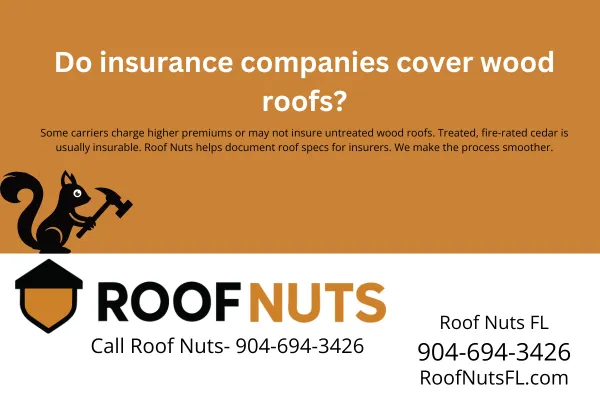
Do insurance companies cover wood roofs?
Do Insurance Companies Cover Wood Roofs?
Wood roofs, especially cedar shakes and shingles, bring natural beauty and curb appeal. But when it comes to insurance, the type of wood and its treatment can make all the difference.
Here’s what you should know:
Untreated wood roofs are sometimes considered a higher fire risk, leading to higher premiums or even coverage denial from certain carriers.
Treated, fire-rated cedar roofs usually meet insurance requirements and are more widely accepted.
Insurers may require documentation proving that your roof meets fire-resistance standards and building codes.
At Roof Nuts, we make the insurance process easier by:
Documenting your roof’s specifications, materials, and fire rating
Providing photographs and manufacturer details for your insurance file
Coordinating with insurers to answer technical questions about your roof
The right paperwork and proof can mean the difference between a policy approval and a costly rejection.
FAQ: Wood Roofing and Insurance
1. Why do some insurance companies avoid wood roofs?
Wood can be more susceptible to fire and weathering than other materials. Insurers factor in risk when setting rates or deciding coverage eligibility.
2. How can I make my wood roof more insurable?
Opt for treated, fire-rated cedar shakes or shingles. Keep up with regular maintenance and provide proof of treatment to your insurance company.
3. Will my premiums be higher with a wood roof?
Possibly. Some carriers charge more due to the perceived fire risk, especially if your home is in a wildfire-prone or high-wind area.
4. Can Roof Nuts help with the insurance process?
Yes. We gather all necessary technical specs, certifications, and photos to help your insurer understand your roof’s compliance with safety standards.
5. Is a treated cedar roof worth the investment?
For many Florida homeowners, yes. Treated cedar offers the charm of wood while improving fire resistance, which can help with both safety and insurability.
